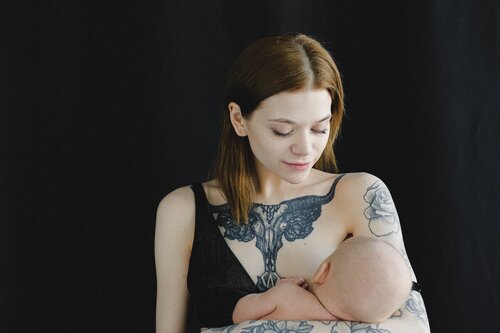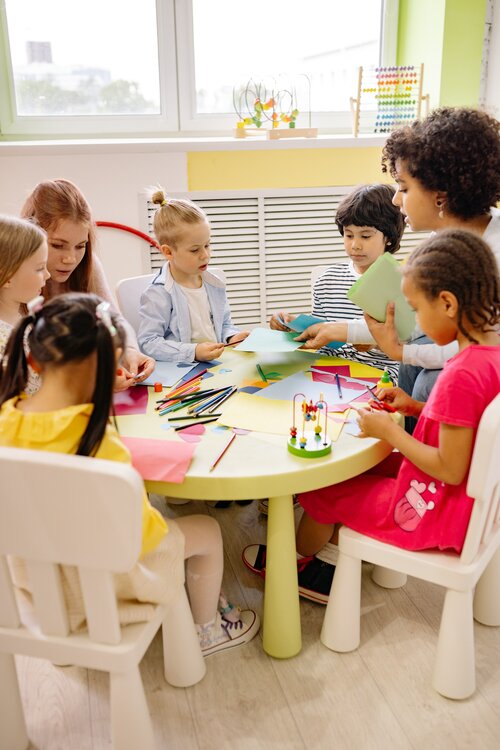Category: health
When is scientifically the best time to have your second? byu/EFNich inScienceBasedParenting Inspired by the above reddit post and the different views on the topic of picking the best interpregnancy period, I created the below timeline based on scientific proof of the best time to have your second baby. It adds value to the reddit post by visually summarising all the info from the reference links and also spotting some contradictory outcomes. Insights The best period to have your second baby is between 18 and 24 months after delivering the first baby. STUDY 1 Conceiving less than 6 months after delivery was associated with an increased risk of adverse outcomes for mom and baby but that waiting 24 months may not be necessary for high-income countries. STUDY 2 Children conceived less than 18 months after their mother’s previous birth or children conceived 60 or more months after their mother’s previous birth were more likely to have ASD when compared to children conceived between 18 to 59 months after their mother’s previous birth. STUDY 3 To reduce the risk of pregnancy complications and other health problems, research suggests waiting 18 to 24 months but less than five years after a live birth before attempting your next pregnancy. STUDY 4 For children conceived less than 12 months or more than 72 months after the birth of an older sibling, the risk of autism was two to three fold higher than for those conceived 36 months to 47 months later. STUDY 5 Biggest risk recorded for children conceived less than 12 month after the birth of an older sibling. STUDY 6 The risk for preterm birth was high if the interpregnancy interval was <6 months. The risk for preterm birth declined as the interval increased and reached the lowest level when the interpregnancy interval was between 12 and 23 months. For interpregnancy intervals of ≥24 months, the risk for preterm birth gradually increased. The risk for preterm birth was high if the interpregnancy interval was ≥120 months. STUDY 7 An increased risk of preterm birth for children born after IPIs of less than 13 months and >60 months relative to the reference category of 19–24 months. STUDY 8 “We compared approximately 3 million births from 1.2 million women with at least three children and discovered the risk of adverse birth outcomes after an interpregnancy interval of less than six months was no greater than for those born after an 18-23 month interval,” Dr Tessema said. “Given that the current recommendations on birth spacing is for a waiting time of at least 18 months to two years after live births, our findings are reassuring for families who conceive sooner than this. “However, we found siblings born after a greater than 60-month interval had an increased risk of adverse birth outcomes.” STUDY 9 To reduce the risk of pregnancy complications and other health problems, research suggests waiting 18 to 24 months but less than five years after a live birth before attempting your next pregnancy. Balancing concerns about infertility, people older than 35 might consider waiting 12 months before becoming pregnant again. STUDY 10 Intervals shorter than 36 months and longer than 60 months are associated with an elevated risk of infant death and other adverse outcomes. STUDY 11 Compared to individuals whose first two children were born at most 18 months apart, individuals whose children were more widely spaced had a lower divorce risk. References STUDY 1: https://journals.plos.org/plosone/article?id=10.1371/journal.pone.0255000 STUDY 2: https://www.cdc.gov/ncbddd/autism/features/time-between-births.html STUDY 3: https://www.mayoclinic.org/healthy-lifestyle/getting-pregnant/in-depth/family-planning/art-20044072 STUDY 4: https://time.com/4033506/autism-risk-siblings/ STUDY 5: https://researchonline.lshtm.ac.uk/id/eprint/4663143/7/Schummers_etal_2021_Short-interpregnancy-interval-and-pregnancy.pdf https://www.dovepress.com/association-of-short-and-long-interpregnancy-intervals-with-adverse-bi-peer-reviewed-fulltext-article-IJGM STUDY 6: https://www.michigan.gov/-/media/Project/Websites/mdhhs/Folder4/Folder15/Folder3/Folder115/Folder2/Folder215/Folder1/Folder315/200804IPI_PTB_LBW_SGA_2008-2018.pdf?rev=e978a7ae96db445ebb0a4cf6d31ea8f9 STUDY 7: https://www.tandfonline.com/doi/full/10.1080/00324728.2020.1714701 STUDY 8: https://www.sciencedaily.com/releases/2021/07/210719143421.htm STUDY 9: https://www.mayoclinic.org/healthy-lifestyle/getting-pregnant/in-depth/family-planning/art-20044072 STUDY 10: https://www.ncbi.nlm.nih.gov/pmc/articles/PMC6667399/ STUDY 11: https://www.ncbi.nlm.nih.gov/pmc/articles/PMC6993964/ (Note: I participate in the affiliate amazon program. This post may contain affiliate links from Amazon or other publishers I trust (at no extra cost to you). I may receive a small commission when you buy using my links, this helps to keep the blog alive! See disclosure for details.) BONUS – a free audible book from Amazon: This is a personal blog. My opinion on what I share with you is that “All models are wrong, but some are useful”. Improve the accuracy of any model I present and make it useful!
I gathered some stats that will help us define what is “normal” in terms of illnesses in child care. What is considered to be normal? According to Mayo Clinic, an average of 7 to 8 infections a year for every kid and more (up to 12 colds a year) for children who are in child care or when they start school. It’s also typical for kids to have symptoms lasting up to 14 days. And sometimes a cough can last up to 6 weeks. That means kids can be sick for a majority of the year and still have a pretty typical immune system. I found other stats on recovery that mention a 7 to 10 days (and even earlier) recovery time, although a cough can last up to 3 weeks. When can my child return to daycare? Most centres have a 24 hour policy. If the child is symptom free for 24 hours, or has been on medication for 24 hours, and they feel better, they can return. Some centres increase this time period to 48 hours during an outbreak in order to prevent further spread of an illness. (according to this website) Another recommendation: Often, a child is not allowed to return to the centre until they’ve been fever-free (or diarrhea-free) for 24 hours. (according to this website) Department of Health and Environmental Control (DHEC) website advise: Most children with mild colds who have no fever and who feel well enough to go to school or childcare do not need to stay home. Most colds spread in the 1-3 days before children show symptoms such as a runny nose or minor cough. (according to this brochure) Useful cold and flu stuff to have at home for babies and toddlers (Note: I participate in the affiliate amazon program. This post may contain affiliate links from Amazon or other publishers I trust (at no extra cost to you). I may receive a small commission when you buy using my links, this helps to keep the blog alive! See disclosure for details.) Electric nasal aspirator A working thermometer, we have have both a non-contact forehead one and a flexible digital thermometer Saline spray Topical vapor rub Age appropriate fever-reducing medications When to start worrying? Jeffrey Modell Foundation’s ( that educates on Primary immunodeficiency: PI) lists out these 10 warning signs that might direct you to a physician). PI causes children and adults to have infections that come back frequently or are unusually hard to cure. 4 or more new ear infections in one year 2 or more serious sinus infections in one year 2 or more months on antibiotics with little effect 2 or more cases of pneumonia within one year Failure of an infant to gain weight or grow normally ( check official WHO Growth Standards here) Recurrent, deep skin or organ abscesses Recurrent thrush in the mouth or elsewhere on the skin after age one Need for intravenous antibiotics to clear infections 2 or more deep-seated infections A family history of primary immunodeficiency The bright side A study (“Daycares have a reputation for being germ factories,” lead author Sylvana Cote of the University of Montreal, in Quebec) found that toddlers in group child care get sick more often than toddlers who stay at home, but found those same kids get sick less often than their peers during the primary school years. A cool visualisation related to our immune system: Pic Source: https://twitter.com/rajivshivan/status/1233692472934531073 This is a personal blog. My opinion on what I share with you is that “All models are wrong, but some are useful”. Improve the accuracy of any model I present and make it useful!
Spending time outdoors is beneficial for everyone. We hear this more and more, but what are the scientific facts behind this statement? I’ve broken up the topic into 3 sections, so you’ll see how outdoor activities positively impact our babies, toddlers and ourselves by encouraging healthy development and critical thinking skills and more. Outdoor time for babies In Scandinavian countries, babies get at least 2 hours of outdoor time. Nordic babies are exposed to sleeping in the stroller even when the weather is not perfect (perfect = negative temperature). The Nordic perspective on this is that one sleeps better while in the cold. Sleep consultants agree that when indoors we should have our babies sleep in 68 F – 70 F / 20 C -21 C (which might be considered cold for adults), but they won’t adhere to the idea of letting a baby sleep in the stroller. Motion sleep is compared to junk food and even called “junk sleep”. I personally think that sleep should be protected as much as possible and it should happen mostly in the bed. However, it’s OK for your baby to have a cat nap in the stroller, so the baby will have a quick recharge and get some natural vitamin D every now and then. (Note: I participate in the affiliate amazon program. This post may contain affiliate links from Amazon or other publishers I trust (at no extra cost to you). I may receive a small commission when you buy using my links, this helps to keep the blog alive! See disclosure for details.) Taking Your Baby Out for the First Time Getting outdoors with babies can be overwhelming for first time parents. On top of worrying about all the possible scenarios when your baby might fuss or even constantly cry, you’ll also concern yourself about forgetting to bring with you all the “crucial” baby stuff. Once you’ve repeated the outdoor activities a number of times, it will become the norm. Make sure you pack once and “refresh the stock” weekly: one full outfit change (for explosive poo – this will end up around 6 months of age, or when your baby will start solids); 3-4 diapers, disposable bags, cream, wet tissues, dry tissues; a travel baby changing pad; a blanket; formula ( if necessary); after solids are introduced, also get water and a baby food refillable pouch. Also important for outdoors activities is the right stroller. There’re so many strollers in the market. We decided over Baby Jogger Stroller with a universal platform (glider). The girls love it: Outdoor time for toddlers We acknowledge more and more the importance of outdoor time, but we spend less time playing outside. An UK study concluded that children spend half the time playing outside in comparison to their parents. Harvard experts researched 6 reasons why children need to play outside: Sunshine Exercise Executive function; These are the skills that help us plan, prioritize, troubleshoot, negotiate, and multitask; Taking risks Socialization Appreciation of nature I recently read an Irish article related to The Benefits of Outdoor Play and I really liked how it’s emphasized that children need to learn how to take calculated risk and that parents shouldn’t set too many limits to children’s adventurous play. They need substantial amount of time outside to boost their creativity, self-confidence, social skills and ability to concentrate. Going outside with toddlers is not too complicated. You just need a bottle of water, napkins, disinfectant, a healthy snack, a small toy and a bit of cooperation. At this age, they might be difficult to convince to get out and then even more difficult to get them back home. Outdoor time for adults Adults also benefit from spending time outdoors. There is a study showing that it takes as little as 2 hours per week spent outdoors for a healthier and happier life. It gives us the chance to absorb some natural vitamin D by walking in the sun for 15-20 minutes a day (maybe a bit longer during the winter time). I also stumbled upon a study on the relations between sleep, time of physical activity, and time outdoors among adult women. It’s quite interesting how they concluded that the morning time spend outdoors is a stronger predictor of sleep efficiency (as opposed to evening). Therefore, we should get into the habit of spending at least 15 min daily (in the morning) outdoors. This will improve our health and sleep! This is a personal blog. My opinion on what I share with you is that “All models are wrong, but some are useful”. Improve the accuracy of any model I present and make it useful!
Introducing solids to babies Solids are an important milestone for babies. Some will love it, some will be a bit reticent at the beginning. So there are 50-50 chances to have a successful food diversification start. Having 2 kids, I can tell you that we experienced both situations: Bianca gave us signs that she’s ready to eat around 6 months of age, but she wasn’t so thrilled: With Giulia it was totally different: she sat in an upright position at 5 months of age and was reaching for our food even earlier. She gave us many signs that she’s ready to eat. We started diversification with her a few days after she celebrated her 5 months birthday: HOW? You have to know that there are 2 main ways to give baby food: baby-led weaning (BLW): solids are introduced as finger food; it is recommended to start with this method when babies are 6 months old or older; puree (Note: I participate in the affiliate amazon program. This post may contain affiliate links from Amazon or other publishers I trust (at no extra cost to you). I may receive a small commission when you buy using my links, this helps to keep the blog alive! See disclosure for details.) Of course, you can do a mix of the two. This is what I did. I used a pressure cooker to soften the food and if I decided to give purees, I used a fork to smash the food until soft with no or small lumps. If you don’t have a pressure cooker yet, I recommend this one, we’re using it on a daily basis. WHEN? Different countries have different recommendations related to when to start giving food to your baby. My Data Science intuition tell me that the 4-6 months milestone is positively correlated with how much maternity leave a parent can take. For example, when we were based in Ireland, the general advise was to give food to babies starting with the 4 months of age (I believe that this is related to parents going back to work earlier). Now we’re in Romania and here you can have a long maternity leave (it’s paid by the Government and you can take up to 2 years). So here, the paediatricians advise to start with solids at 6 months of age. HOW MUCH? I followed a super easy rule for both Bianca and Giulia: gradual increase of food: started with a spoon and reached a cup at each meal; number of meals by age: 4-6 Months old: 1 meal / day; 7 Months old: 2 meals / day; 8-9 Months old: 3 meals / day; 10-12 Months old: 3 meals + 1 snack / day; 1 Year+ : 3 meals + 2 snacks / day; WHAT? I’ll start this section with what NOT to give the baby: salts, sugar and honey are forbidden in the first 12 months. 4-6 Months old – 1 meal / day : LUNCH: Vegetables + Proteins Vegetables: sweet potato, parsley, zucchini, carrot, parsnip, green beans, pumpkin, bell pepper, onion, garlic, leek; Proteins: homemade cheese, chicken, turkey, quail, rabbit, beef, egg (hard boiled); Others: Olive oil, parsley leaves, lovage, dill; 7 Months old – 2 meals / day : BREAKFAST: Fruits LUNCH: Vegetables + Proteins Fruits: apple, pear, avocado, apricot, peach, nectarine, plum, banana, blueberries, watermelon; Vegetables: same as month above; Proteins: same as month above; Others: caraway, cumin, cinnamon, turmeric, thyme, oregano,inactive yeast 8-9 Months old – 3 meals / day : BREAKFAST: Fruits LUNCH: Vegetables + Proteins DINNER: Vegetables, Cereals, Dairy products Fruits: same as months above plus grapes, cherries, sour cherries, papaya, dehydrated dates, raisins, kaki, mango, cranberries Vegetables: same as months above plus red beets, green peas, broccoli, cauliflower, red lentil, green lentil, celery, lettuce, endive; Proteins: same as month above plus yogurt, butter, sour cream, liver, white fish (trout, cod, perch, hake, gray mullet, dorada); Cereals/ Pseudocereals: millet, rice, bulgur, couscous, oat, barley; 10-12 Months old – 3 meals + 1 snack / day : BREAKFAST: Fruits LUNCH: Vegetables + Proteins SNACK: Fruits DINNER: Vegetables, Cereals, Dairy products Fruits: same as months above plus quince, figs, kiwi, chestnuts, pineapple, strawberries, raspberry, blackberries, orange, lemon, grapefruit, pomelo, pomegranate in a smoothie, goji, olives, nuts – peanuts – cashew – pistachio- almond crushed; Vegetables: same as months above plus tomato, aubergine, spinach, mushroom, wild garlic, turnips, white potato, asparagus, cucumber; Proteins: same as month above plus ricotta, mozzarella, mascarpone, kefir, pork, mutton, goose, duck, lamb; Cereals/ Pseudocereals: same as month above ; 1 Year – 3 meals + 2 snacks / day : BREAKFAST: Fruits LUNCH: Vegetables + Proteins SNACK: Fruits DINNER: Vegetables, Cereals, Dairy products SNACK: Vegetables Fruits: everything ; Vegetables: same as months above radishes, peas, artichoke, sorrel, cabbage, nettles; Proteins: same as month above plus fish, cheese, cream cheese, cheddar, parmesan, edam, gouda, svaiter, grana padano, emmental, pecorino, goats cheese; Cereals/ Pseudocereals: everything ; WHAT? I’ll start this section with what NOT to give the baby: salts, sugar and honey are forbidden in the first 12 months. Get a long bib that attaches to the highchair and let the baby explore the food, it will be fun! This is a personal blog. My opinion on what I share with you is that “All models are wrong, but some are useful”. Improve the accuracy of any model I present and make it useful!
Famous aphorism, which originates from 1976, was mentioned by George Box when referring to statistical models. I find “All models are wrong, but some are useful” to be applicable to all the models in our lives, but especially to how we’re supposed to raise our kids. Internet is full nowadays of guides about everything you need to know to raise a child. You’ll find in this article the most important mental and physical baby/toddler development info, so bookmark this page! (Note: I participate in the affiliate amazon program. This post may contain affiliate links from Amazon or other publishers I trust (at no extra cost to you). I may receive a small commission when you buy using my links, this helps to keep the blog alive! See disclosure for details.) Understanding Growth Standards for Children The WHO Child Growth Standards were developed using data collected in the WHO Multicentre Growth Reference Study by the World Health Organisation. The site presents documentation on how the physical growth curves and motor milestone windows of achievement were developed as well as application tools to support implementation of the standards. The below growth curves can guide you in the first 2 years of age: Tracking Your Child’s First Major Gross Motor Milestones As a first time parent I was concerned about how soon my baby girl managed to achieve the major motor milestones. The below chart sums up a comprehensive study by the World Health Organization. You’ll see that the windows of achievement are wide, there is no reason to be concerned if your baby is inside the window. Reference: WHO Multicentre Growth Reference Study Group. WHO Motor Development Study: Windows of achievement for six gross motor development milestones. Acta Paediatrica Supplement 2006;450:86-95. Tracking Mental Development Milestones in Children I’ve mapped below the first 3 years of mental development milestones based on 3 famous books: The Wonder Weeks: A Stress-Free Guide to Your Baby’s Behavior Misbehavior is Growth: An Observant Parent’s Guide to the Toddler Years Misbehavior is Growth: An Observant Parent’s Guide to Three Year Olds The Wonder Weeks: 10 major, predictable, age-linked changes – or leaps – during their first 20 months of babies’ lives: Below is what Amber Domoradzki observed as childhood developmental stages: Creating a Healthy Sleep Schedule for Your Baby I really like how Dr Marc Weissbluth advises In his book Healthy Sleep Habits, Happy Child, 5th Edition: A New Step-by-Step Guide for a Good Night’s Sleep to “watch your child, not the clock”, but still tells you to try and stick to a sleep schedule. A schedule will help you obtain healthy sleep patterns. You’ll baby will give you signs when she/he will be ready to have the sleep schedule adjusted. I shared my experiences with sleep training in this article: https://thebabydatascientist.com/2-successful-sleep-training-methods-to-try/ Navigating Sleep Regressions in Infants and Toddlers Sleep regressions; I’m not sure how real they are, but be aware that they might happen: A Step-by-Step Guide to Introducing Solids to Your Baby’s Diet Introducing solids: the cheatsheet of baby food by months. You’ll find details in this article: https://thebabydatascientist.com/introducing-solids-the-cheatsheet/ Immunization Schedule for Children 0-15 months old: Find below immunization recommendations by the Centers for Disease Control and Prevention (CDC) for Ages 15 months old and younger . Some countries might provide the below vaccines for free based on the national vaccination schema: Encouraging Independent Play in Children Solo play is encouraged and beneficial, but how long can our babies / toddlers play by themselves? at 6 months up to 5 minutes at 12 months 10 to 15 minutes at 18 months up to 20 minutes at 24 months up to 30 minutes A full article on this here: https://thebabydatascientist.com/independent-play-6-to-24-months/ OMG Are they all wrong? Well yes, it will not be 100% applicable to your child. Still, they’re useful. It’s reassuring to know what to expect and that difficult periods are normal.






